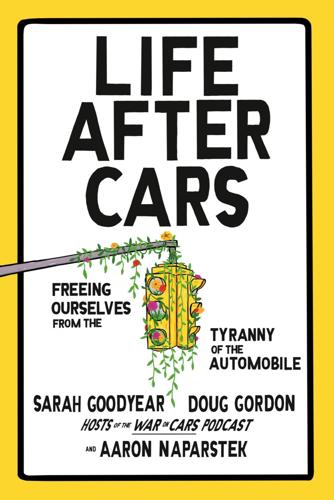
Life After Cars: Freeing Ourselves From the Tyranny of the Automobile
by
Sarah Goodyear
,
Doug Gordon
and
Aaron Naparstek
Published 21 Oct 2025
Given that the solutions to our traffic safety and environmental woes can be implemented far faster than even the impressively fast work seen on I-95 in Philly, is it any wonder advocates like us—or anyone who’s tried to get so much as a crosswalk painted or a stop sign installed on their corner—are frustrated with the pace of change? Tactical Urbanism Thankfully, there is an effective, inexpensive, and ingenious technique even ordinary citizens can use to demonstrate that change not only is possible but also can be achieved faster than a highway replacement in Philadelphia. It’s called tactical urbanism. According to Mike Lydon and Anthony Garcia, two expert practitioners in the field who defined the term, tactical urbanism is a creative, do-it-yourself approach that “employs short-term actions for long-term change” using “low-cost…interventions and policies.”
…
GO TO NOTE REFERENCE IN TEXT Granted, the short section of highway: Amanda Holpuch, “I-95 Overpass Collapses in Philadelphia After a Tanker Fire,” New York Times, June 11, 2023. nytimes.com/2023/06/11/us/philadelphia-i-95-collapse-vehicle-fire.html. GO TO NOTE REFERENCE IN TEXT “employs short-term actions for long-term change”: Mike Lydon and Anthony Garcia, Tactical Urbanism (Island Press, 2015), 2; and Robert Steuteville, “Tactical Urbanism Comes of Age,” Public Square, June 23, 2021, cnu.org/publicsquare/2021/06/23/tactical-urbanism-comes-age. GO TO NOTE REFERENCE IN TEXT On the morning of Friday, August 7, 2015: John R. Ellement, “What the Police Report Shows on the Tragic Crash in Back Bay That Left Bicyclist Dead,” Boston Globe, February 1, 2018, bostonglobe.com/metro/2018/02/01/what-police-report-shows-tragic-crash-back-bay-that-left-bicyclist-dead/PsSDSt4eyMy4K5tXeC1yCL/story.html.
…
Making the Water Visible to the Fish Tactical urbanism has the power to pierce the automotive bubble that so frequently surrounds politicians—sometimes in an almost literal sense, because so many elected officials are driven everywhere. It can force them to see that they can become catalysts for rapid change if they really want to. But the value of these tactics goes well beyond the safety (and frequent smiles) that these interventions provide for cyclists or pedestrians who pass by while they’re in place—or even the permanent infrastructure changes they might inspire. A key benefit of tactical urbanism is that it helps, or even forces, the average person to see our car-based reality for the social construct that it is.

City 2.0: The Habitat of the Future and How to Get There
by
Ted Books
Published 20 Feb 2013
It’s too early to tell, but that one-night sit-down could well prove to be the tipping point in revitalizing an underpass, then a block, and eventually a local economy. This gathering is just one example of a movement happening all over the country: tactical urbanism. Also called DIY (do-it-yourself) urbanism or guerrilla urbanism, tactical urbanism uses short-term actions to catalyze real, long-term change. It might be quirky, but it’s a serious strategy for creating more vibrant, livable places through lightweight, temporary, grassroots projects called interventions. You’ve probably seen tactical urbanism at work, though you may not have recognized it as anything more than a hipster prank. Lampposts or tree trunks wrapped in brightly colored knitting?
…
Streets shut down to cars and dominated by hordes of bicyclists, skateboarders, pedestrians, or even pole-vaulters? Open streets. Even the ersatz dinner in North Adams has a name: strEATing. Tactical urbanism melds elements of art, stagecraft, politics, citizen engagement, activism, science, and urban planning. It’s fun, but it also offers a remarkably practical way forward: The best interventions are actually carefully crafted experiments to test potential long-term improvements. Mike Lydon, Dan Bartman, Ronald Woudstra, and Aurash Khawarzad, the authors and lead instigators behind the first Tactical Urbanism guide, write, “Long-term change often starts with the process of trying something small. … There is real merit in a municipality spending $30,000 on temporary material changes before investing $3,000,000 in those that are permanent.”
…
Catalyzing change Today radical urbanism is seeping into our cities. Interventions everywhere are variously increasing walkability, decreasing crime, boosting small businesses and revitalizing whole blocks, launching new entrepreneurs, and limiting traffic and pollution. Whether driven by cities or citizens, tactical urbanism has the power to transform our places, our neighborhoods, and our lives. Tactical urbanism is doing all of this on a shoestring, without years of permit processes and political wrangling — and that is the key to its greatest benefit. Mike Lydon, one of the movement’s leading thinkers and doers, observes, “We’ve seen dozens of short-term projects deliver long-term economic, public health, and environmental benefits.

Building the Cycling City: The Dutch Blueprint for Urban Vitality
by
Melissa Bruntlett
and
Chris Bruntlett
Published 27 Aug 2018
Armed with the knowledge that half the population would be suspicious of the government arriving and saying, “We’re here to help,” and the other half tired of grand plans that might never come to fruition, Sadik-Khan used a fresh “tactical urbanism” strategy to bring about change in a provisional and cost-effective manner. A growing practice among planners and advocates, tactical urbanism is the act of quickly transforming an existing space, using inexpensive materials, to temporarily create a more welcoming environment for walking, cycling, or public life. Despite early skepticism from the media and the public, by the end of her six-year reign as transportation commissioner, Sadik-Khan became renowned for lighter, quicker, cheaper projects.
…
The words “STAND STRAIGHT / WALK PROUD” appear larger than life on the crosswalk as a reminder that pedestrians have the right to the street, and while it is the first pilot of its kind in Rotterdam—harkening to the now-ubiquitous rainbow crosswalks across North America, and Hecho en Casa, an urban intervention and street art festival in Santiago, Chile—the City will be monitoring this intersection closely. If deemed a success, it will be implemented in other problematic areas of Rotterdam. But of all the tactical urbanism interventions that Besselink has imported to Rotterdam during her tenure, she credits San Francisco’s PARKing Day as the start of it all. “It fit the objective of ‘City Lounge’ so well: create more public space and more green space.” Working with Happy Streets, the City simply acted as a facilitator, leaving businesses and residents free to choose their level of involvement.
…
While he has lost his naïveté about the behavior of cyclists because his observational studies have revealed how truly remarkable and special cycling in Amsterdam is, he is grateful that the work of the Urban Cycling Institute can contribute to the romantic idea of cycling for his fellow citizens. “After all, I wish that everybody can keep experiencing this remarkable phenomenon unconsciously,” he declares proudly. How Tactical Urbanism Helps Bostonians “Demand More” “As an architecture student, when you first get into school they tell you you’ll never be able to see the city the same way again,” explains Boston-based architect Jonathan Fertig. “But for me, I started to look at streets that way, more so than buildings. Streets and public spaces became the things where I asked, ‘Why is the city like this?
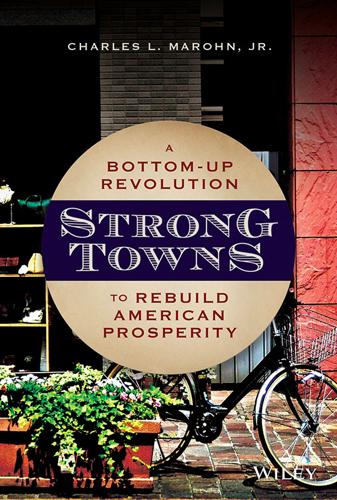
Strong Towns: A Bottom-Up Revolution to Rebuild American Prosperity
by
Charles L. Marohn, Jr.
Published 24 Sep 2019
I’ve witnessed their work and seen a block of empty storefronts transformed into a bustling economic hub, dangerous streets made passable, and empty spaces turned into wealth-radiating gathering spaces, all on a tiny hacker’s budget. These are real financial gains from very little investment, turning community assets from underperforming to wealth generating, all while improving the quality of life for people. This is how Mike and his colleague Anthony Garcia describe the process in their book, Tactical Urbanism. Tactical Urbanism is frequently applied to what urban sociologist William “Holly” Whyte called the “huge reservoir of space yet untapped by imagination.” Today’s reservoirs – vacant lots, empty storefronts, overly wide streets, highway underpasses, surface parking lots, and other underused public spaces – remain prominent in our towns and cities and have become the targets of entrepreneurs, artists, forward-thinking government officials, and civic-minded “hacktivists.”
…
Francis Catholic Church (Brainerd, Minnesota), 212–213 Sales tax, 49–50 Samuelson, Paul, 91 San Diego, California, 164–167 San Francisco, California, xi Santa Ana, California, ix–xii “Second ring” suburbs, 94 Sedlacek, Tomas, 104 Shovel-ready building sites, 32 Shreveport, Louisiana, 219–221 Sidewalk maintenance, 183, 203 Silos, in local government, 174–176 Simply Complexity (Johnson), 12 Sinclair, Upton, 50 Single-family housing, 144–145 Site-specific infrastructure, 130 Small businesses: importance of, in wealth creation, 162–163 productivity of, 133–134 Social return on investment, 78–79 Speck, Jeff, 206 Spooky wisdom: defining, 4 of farmers, 85 in human habitats, 5–10 in incremental growth of cities, 26 “Sprawl Repair,” 168 Stagflation, 94 State government: debt taken on by, 113–114 funding of local government by, 95 impact of infrastructure on, 79 limiting of municipal debt by, 191 relationship of local and, 197–198 Stewart, Paul, 152 Strategic retreats, 108–109 Strongest Town competition, 161 Strong Towns (organization), 226 Strong Towns movement, 225–226 Strong Towns Podcast, 152, 214–215 Subsidiarity principle, 195–198 Suburban development, 27–30 as growth, 100 urban infrastructure supporting, 114–115 Suburban Retrofit, 168–169 Summers, Lawrence, 63, 78 Sussman, Ann, 8, 9 Symmetry, 9 Systems: anti-fragile, 4, 6 cities as complicated, 11–14 complex, adaptive, see Complex, adaptive systems critical, 182–183 fragile, 4 maintenance-free, 112–113 maintenance required to continue, 115 noncritical, 182 redundant, 182 T Taco John's, 132–134 Tactical Urbanism, 158–159 Tactical Urbanism (Lydon and Garcia), 158 Taleb, Nassim, 4, 59, 120–121, 193 Taxation, 46–50 Tax subsidies, for redevelopment, 133–134 Team approach, in local governments, 175–176, 179–180 Temporal discounting, 57 Tents, 160–161 Thigmotaxis, 8 “Tiny homes,” 163 Traditional city development: as lead by private investment, 34 as low-risk investments, 149 productivity of, 131–134, 140–141 as series of little bets, 16–18 Transit coordinator, 178t–179t Transit projects, 73–74 Transportation: human habitats build around, 1–3 in Santa Ana, California, xi–xii Triage, 119–120 Tribe (Junger), 216 Trickle-down economics, 101 Trump, Donald, 63, 207 U United States: development pattern in Costa Rica vs., 126–127 Urban3, 138, 140, 142, 161 U.S.dollar, as basis for trade, 90–91 Use-based codes, 193–194 V Value: of infrastructure, 70 Value capture approach, 76–77 Value per acre analysis, 135, 138–144 determining productivity with, 138–142 of high-productivity neighborhoods, 150–151 for Lafayette, Louisiana, 141–144 and personal preferences, 144–145 of small businesses, 162 W Walkability: “General Theory of Walkability,” 206 improving, in Shreveport, 220 Walkable City, How Downtown Can Save America One Step at a Time (Speck), 206 Walking: in communities, 203–206 finding gaps in cities by, 160 human habitats build around, 1, 2 in suburbs, 111–112 Walmart, financial productivity of, 139–140, 139t Walt Disney Corporation, 151 Washington, George, 108 Watches, 11 Wealth: growth vs., 102–104 illusion of, 57–60 Wealth creation, in place-oriented government, 176–180, 177t–179t White flight, 111 Why Liberalism Failed (Deneen), 211 Whyte, William “Holly,” 158 Wikipedia, 196 Women, in workplace, 95–96 The World Until Yesterday (Diamond), 58, 84 World War I, 86–87 World War II: confirmation bias of Pacific Islanders after, 183–185 economic stability following, 89–91 Z Zoning: and changes in building use, 137 as constraint on growth, 167–168 and neighborhoods, 21 neighborhoods atrophied by, 163 and urban renewal, 117 WILEY END USER LICENSE AGREEMENT Go to www.wiley.com/go/eula to access Wiley’s ebook EULA.
…
With local government responsive to the struggles of the people in a neighborhood – instead of grant programs, big developers, or bureaucratic processes – residents gain confidence in the direction of the neighborhood. Give people confidence, and a little bit of room to be creative, and amazing things happen. I met Mike Lydon, one of the authors of Tactical Urbanism: Short-Term Action for Long-Term Change, back in 2010, when his ideas for iterating rapid change were forming. I must admit, I was still doing some traditional engineering and planning work then and the stories of pallet benches, pop-up parks, and temporary crosswalks Mike shared seemed fun, but frivolous.
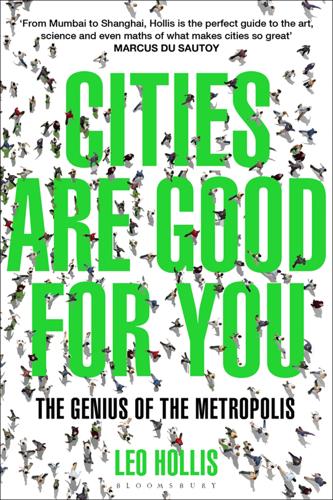
Cities Are Good for You: The Genius of the Metropolis
by
Leo Hollis
Published 31 Mar 2013
Initiatives like Better Block are all part of a larger movement embraced by ‘tactical urbanism’. Here the emphasis is on incremental change from the bottom up, with a focus on five main goals: A deliberate phased approach to instigating change The offering of local solutions to local planning challenges Short-term commitment and realistic expectations Low risks, with a possibly high reward The development of social capital between citizens and the building of organisational capacity between public-private institutions, non-profit and their constituents.28 Such tactical urbanism can be found in many places: Depave is a group from Portland, Oregon that tears up unwanted asphalt and returns the land to gardens.
…
Nicholson-Smith, D.,The Production of Space, Blackwell, 1991 Lehrer, J., ‘A Physicist Solves the City’, New York Times, 17 December 2010 Lehrer, J., Imagine: How Creativity Works, Canongate, 2012 Lindsay, G., ‘Demolishing Density in Detroit’, Fast Company, 5 March 2010 Lindsay G., Instant Cities, www.greglindsay.org Lydon, M., Bartman, D., Woudstra, R. and Khawarzad, A., Tactical Urbanism, Volume 1, Next Generation of New Urbanists, 2011 Lydon, M., Bartman, D., Woudstra, R. and Khawarzad, A., Tactical Urbanism, Volume 2, Next Generation of New Urbanists, 2012 McKibben, B., Hope, Human and Wild, Milkweed Editions, 2007 McKinsey Reports, East London: World Class Centre for Digital Enterprise, McKinsey, March 2011 Mairet, P., Pioneer of Sociology: The Life and Letters of Patrick Geddes, Lund Humphries, 1957 Mak, G., trans.
…
Tellinga, J., from talk, 12 November 2010, International New Town Conference, www.newtowninstitute.org 24. Gehl, J. and Koch, J., Life Between Buildings: Using Public Space, Island Press, 2011, p. 29. 25. Gehl, J. and Gemzoe, L., New City Spaces, Danish Architectural Press, 2003, p. 54. 26. Ibid., p. 58. 27. ‘The Origin of the Power of Ten’, www.pps.org/reference/poweroften 28. Tactical Urbanism, Volume 1, pp.1–2. Chapter 4: A Creative Place 1. www.wired.co.uk/news/archive/2010–11/04/david-cameron-silicon-roundabout 2. travel.nytimes.com/2007/09/23/travel/23bilbao.html 3. www.guggenheimbilbao.es/uploads/area_prensa/notas/en/PR_Results_2010.PDF 4. www.nytimes.com/2007/02/01/arts/design/01isla.html 5.

Streetfight: Handbook for an Urban Revolution
by
Janette Sadik-Khan
Published 8 Mar 2016
Cities like San Francisco, Buenos Aires, and Mexico City are creating pocket parks atop former triangles of asphalt or reclaiming and activating forlorn spaces beneath highways, giving new life and creating the “small change” of street contacts from which public life can grow. Paris’s Plages and the Promenade Plantée and New York City’s High Line attract millions of visitors to former urban rail rights-of-way and roads turned into parks. These concepts have trickled down—and up—to tactical urban interventions that turn parking spaces into cafés or a mini park for a day. They are examples of urban alchemy, converting outmoded infrastructure into modern, public space that awakens cities and makes people want to move in and stay. These developments are particularly important for attracting younger populations back to urban centers, which are driving cities’ rebirth.
…
There are thousands of examples around the world of city residents’ reclaiming streets in largely unsanctioned but harmless ways, using only their own creativity and low-cost materials. They can be murals painted on neighborhood streets, artificial turf or chairs in a parking space to create a park for a day, or yarn-bombing parking meters. In the book Tactical Urbanism, Mike Lydon and Anthony Garcia document the efforts of one neighborhood group in Hamilton, Ontario, that placed unauthorized traffic cones to create a neck-down at an intersection residents felt was dangerous. The city immediately removed them, but the ensuing debate led to an official installation of markers to channel traffic.
…
Reasonably Polite Seattleites: Tom Fucoloro, “Guerrilla Road Safety Group ‘Politely’ Installs Illegal Bike Lane Protectors on Cherry Street,” Seattle Bike Blog, April 4, 2013, accessed August 7, 2015, www.seattlebikeblog.com/2013/04/04/guerrilla-road-safety-group-politely-installs-illegal-bike-lane-protectors-on-cherry-street/. In Dallas, neighbors: Mike Lydon and Anthony Garcia, Tactical Urbanism (Washington, DC: Island Press, 2015), 103–8, 121–22. CHAPTER 8: BIKE LANES AND THEIR DISCONTENTS “to talk about bicycles”: City Council, City of New York, “Transcript of the Minutes of the Committee on Transportation—December 9, 2010,” 8, accessed August 10, 2015. “a policy our city pursues”: Ibid., 9.

The End of Traffic and the Future of Transport: Second Edition
by
David Levinson
and
Kevin Krizek
Published 17 Aug 2015
Tony Dutzik, Adie Tomer, Phineas Baxandall and Robert Puentes, Discussion Summary; April 17, 2015, available from: http://www.brookings.edu/research/papers/2015/04/17-driving-in-the-21st-century-dutzik-tomer-baxandall-puentes 288 Anderson, Michael (2014-08-14) "The Summer of Demos: One-Day Protected Bike Lanes Sweep Across America" People for bikes http://www.peopleforbikes.org/blog/entry/the-summer-of-demos-one-day-protected-bike-lanes-sweep-across-america 289 Some say a more "strategic" variant is referred to as tactical urbanism. See Lydon, Mike and Garcia, Anthony (2015) Tactical Urbanism: Short-term Action for Long-term Change. Island Press. 290 City of Boulder. Colorado. Living Lab. https://bouldercolorado.gov/goboulder/bicycle-living-laboratory 291 BY STEVE HYMON ON MAY 20, 2010 The Source: Federal Transit Administration chief: 'Paint is cheap, rails systems are extremely expensive' http://thesource.metro.net/2010/05/20/federal-transit-administration-chief-paint-is-cheap-rails-systems-are-extremely-expensive/ 292 Whitaker, Nick (2007-08-13) Paint a Parking Lot, Put Up a Paradise.
…
This requires re-adjusting notions of what comprises infrastructure. Communities test waters of road repurposing for bicycling, for example, by turning to plant-filled, orange five-gallon buckets from your local hardware superstore, or strips of green astroturf.288 These type of initiatives are termed 'tactical urbanism' or 'guerrilla traffic calming.'289 Sanctioned or unsanctioned by the community, the result might be parklets, 'Pavement to Plaza', or 'Build a Better Block' initiatives. These are small-scale interventions with a community-focus and a local scale. Their main purpose is to test the notion of how a place works or is perceived.
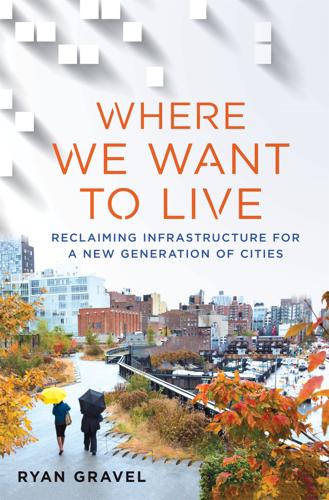
Where We Want to Live
by
Ryan Gravel
Published 2 Feb 2016
The irony of my satisfaction with that dérive at the Place du Trocadéro, a part of Paris that had been radically altered at the hands of Haussmann, is not lost on me. But by acknowledging the viewpoint of both the situationist and the flâneur, a more enlightened picture is painted that illustrates what was—and still is—happening in the world. Alongside Jane Jacobs, parallel environmental arguments, and even more contemporary campaigns like Tactical Urbanism that are emerging at a grassroots level, the overwhelming sentiment seems to be that there is something very wrong with the way we have been building cities for well over the last half century. The durability and diversity of this movement and the increased clarity of that larger picture also suggest that those of us who care should push more aggressively against the status quo of most city building practices.
…
Louis, Missouri: Iron Horse Trestle, 145 Salt Lake City, Utah, 153, 171–2, 172 Santa Monica Boulevard (California), 179–84 Savannah, Georgia, 13–16, 17, 17–19, 25–6, 33, 68, 119–20, 192, 211 Sherman, William Tecumseh, 26, 132 Singapore: Rail Corridor, 142, 145, 146, 150 Situationist International, 1–2, 7–9 sprawl, 12, 15, 42–54, 70–4, 219–23 advantages of, 50–1 and Atlanta, 39, 55–9, 73–4, 79–80, 100 and car-dependency, 61–7, 79, 158 219–20 and Chamblee, Georgia, 43–6, 74 and commuting, 42, 51 and Detroit, 208 as distinct from suburbs, 42 and equity, 135, 197, 201–2, 204–5 and inflexibility to change, 67–70 influence on modern culture, 52 and isolation, 49–51, 60, 135, 183, 204 origin of the term, 59 and public health, 65–6, 182–3, 185 and public realm, 68, 72–3 and segregated low density, 59–61 and walking, 44, 46, 49, 60–4, 66–7, 74 and zoning, 53, 60–1, 72 Starnes, Debi, 91–2 Stone, Clarence, 103–4 StudioPlex, 84, 90, 97, 123–4 Tactical Urbanism, 9 transit and transportation. See Atlanta transit and transportation Trees Atlanta, 123, 176 Trust for Public Land (TPL), 101, 111, 116–17, 123, 129, 176 urban planning, 14, 59, 170, 181, 185, 196, 221. See also Atlanta Beltline; city planners; infrastructure; zoning vanMeter, Paul, 146–7, 164–6 Village of Euclid v.

Bike Boom: The Unexpected Resurgence of Cycling
by
Carlton Reid
Published 14 Jun 2017
The Department of Transportation’s Bikeways—State of the Art design guide of 1974 featured a ten-speed bicycle being chiseled out of stone. The report included information on “protected lanes which … provide a positive physical separation between bicycles and motor vehicles rather than a simple marking delineation,” and praised the sort of rough-and-ready infrastructure provision now known as “tactical urbanism.” For example: “In Sausalito, California, planter boxes have been deployed as the lane delineation buffer.” Bikeways also consulted “European reference material,” including Dutch studies, to work out the best surfaces to use on bikeways, the right widths, optimum capacity, and the best cornering angles.
…
It’s a collation of Google Street View images collected by Brazilian urban design collective Urb-i. More than a thousand street makeovers are listed on urb-i.com, and the archive grows daily. New York City’s Times Square is on there, of course. The Street View image from 2009 shows a car-dominated scene; the 2014 image doesn’t. The 2011 image shows “tactical urbanism” in progress, with planters temporarily—and cheaply—blocking the way, and people starting to dominate. Google Street View is ten years old this year. Take heart that, during those ten years, many towns and cities have taken the plunge to transform themselves. Much of this book has been about the fading away of bicycling cultures.
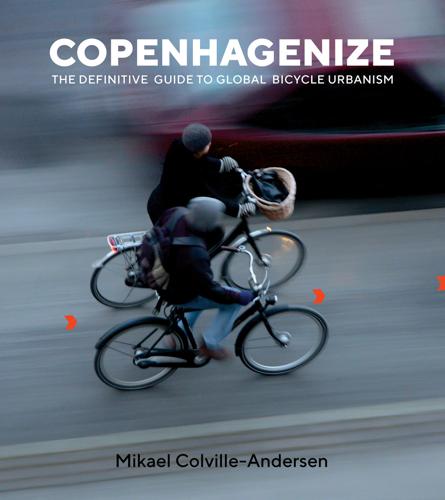
Copenhagenize: The Definitive Guide to Global Bicycle Urbanism
by
Mikael Colville-Andersen
Published 28 Mar 2018
We talk to drown out other voices, or we talk for ages in the interest of reaching a compromise that keeps everyone happy. While we may not see the scale of demonstrations in the 1970s again anytime soon, we are now seeing smaller-scale activism with far-reaching effect through social media. While the phrase tactical urbanism is new, the idea is not. It is, however, on the rise all over the world as an effective tool for showing, as opposed to telling. The phrase itself, attributed to urban planner Mike Lydon, is both an excellent description of the work being done and a banner slogan to inspire others. This is one of my key points when giving advice around the world—show people the ideas or plans.
…
“It’s better to ask for forgiveness after than for permission before,” as they told me. They have inspired many people to paint bike lanes around the world, in countries as diverse as Mexico, Brazil, Latvia, and Japan, to name just a few. Jason Roberts and his Better Block Foundation are an amazing example of taking tactical urbanism to spectacular new levels. From the simple idea of temporarily transforming a run-down city block near Dallas, Better Block has now expanded We are now seeing smaller-scale activism with far-reaching effect through social media from activism to serious urbanism, working tirelessly with cities and citizens alike.
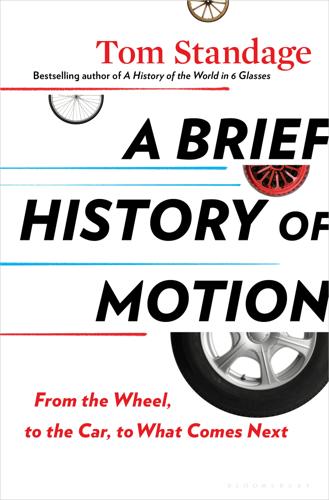
A Brief History of Motion: From the Wheel, to the Car, to What Comes Next
by
Tom Standage
Published 16 Aug 2021
It allows for experimentation and iteration, for example by testing pop-up bus lanes or bike lanes, reclaiming parts of residential streets through small green areas called parklets, or creating pedestrian plazas, and measuring their impact on street use and travel patterns—an approach called tactical urbanism. Experiments that work can be made permanent, and those that do not can be reversed. The internet of motion also provides a framework that can accommodate new modes of transport in the future, such as autonomous vehicles, drone-like flying taxis, or whatever is invented in the decades to come.
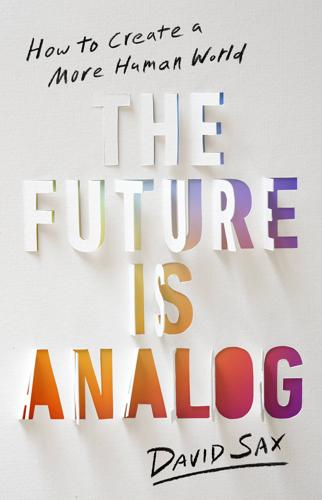
The Future Is Analog: How to Create a More Human World
by
David Sax
Published 15 Jan 2022
The transformation over the past decades that returned cities to more walkable, livable places was decidedly analog. In New York City a decade ago, an imaginative and bold transportation commissioner named Janette Sadik-Khan used inexpensive outdoor furniture, large planters, and colored road paint to insert “tactical urban interventions” in areas like Herald Square and Times Square, reclaiming corners and triangles of pavement at first for walkers and outdoor diners and ultimately whole intersections and blocks for pedestrians. New York City created hundreds of miles of bike lanes in just a few years, stretching from Midtown Manhattan’s heart as far as Jamaica Bay, in Queens.
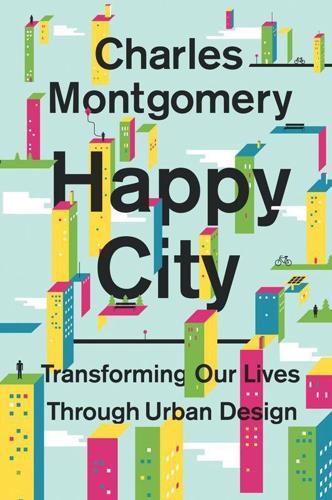
Happy City: Transforming Our Lives Through Urban Design
by
Charles Montgomery
Published 12 Nov 2013
Something happened because something was allowed to happen, a rare condition in cities dominated by automobiles or overregulation. But the food cart is starting to become a favorite of urban planners in rich cities. From Portland and Boston to Calgary, planners use mobile vendors as a means of tactical urbanism, infusing enough life to long-dead blocks to draw people and, eventually, brick-and-mortar businesses. Velocities For all its rough glory, there is a starker lesson rubbing up against that Copilco plaza. Getting there from the north requires a death-defying sprint through a stampede of peseros and even faster-moving taxis and private cars on Eje Diez, one of a network of highway-like arteries laid down across Mexico City in the 1970s.

Smart Cities: Big Data, Civic Hackers, and the Quest for a New Utopia
by
Anthony M. Townsend
Published 29 Sep 2013
The ability to reprogram instead of rebuild, and evaluate the results immediately through sensors, will allow more experimentation with “soft fixes” and iterative design. It’s easy to imagine new cities and neighborhoods where infrastructure and activities are moved around months or even years after they are initially placed, in response to observed patterns of use. Smart technologies could accelerate the growing array of tactical urban interventions and pop-up installations—from food trucks and temporary parks to technology incubators and farmers’ markets built inside shipping containers. Much like Cedric Price’s Generator, the ability to redesign the city on the fly will challenge architects and urban designers to come up with more flexible structures.

Retrofitting Suburbia, Updated Edition: Urban Design Solutions for Redesigning Suburbs
by
Ellen Dunham-Jones
and
June Williamson
Published 23 Mar 2011
Paul (Minnesota) stacked flats stacked maisonettes Stanford Industrial Park (Palo Alto, California) Starbucks static tissues Belmar defined Downtown Kendall/Dadeland Mashpee Commons University Town Center Stiff, David Stone, Edward Durell stormwater Storrs, Douglas streetcar streets Belmar classification system Cottonwood Mall Downtown Kendall/Dadeland Perimeter Place University Town Center walkable design streetscaping strip corridors. see also commercial strips; corridors strip malls. see also commercial strips; Mashpee Commons Stripscape project (Phoenix, Arizona) structured parking. see also car parking student housing subdistricts subdivisions. see residential subdivisions suburban demographics. see demographic entries suburban downtowns suburban form suburban morphology. see morphological analysis suburban myth suburban tissues Belmar defined Downtown Kendall/Dadeland Mashpee Commons University Town Center suburban workplace retrofits Cloud 9 Sky Flats overview Upper Rock Westwood Station suburbia demographic changes in revised history of Sugrue, Thomas Sunny Brook Meadows (Atlanta, Georgia) Suozzi, Tom superregional centers supply-and-demand analysis Surrey Central City (Surrey, British Columbia) sustainability sustainable urbanism Sweetnam, Jan Swope, Christopher synergy TAD (tax allocation district) talent Target target market analysis tax allocation district (TAD) tax-increment financing (TIF) taxpayer strips technoburbs technology technology office parks Temple Terrace (Florida), Ten Principles for Reinventing America’s Suburban Business Districts, book Tennessee. see Nashville, Tennessee Texas Addison Circle Dallas Denton Public Library North Branch Galleria District Garland Greenway Plaza Gulfton Las Colinas Legacy Town Center Plano Woodlands Town Center Texas donuts Texas Instruments (TI) theme centers “third place” Third Street Promenade (Santa Monica, California) Thornton Place Thorsen, Mark TI (Texas Instruments) TIF (tax-increment financing) time and value gap tissues. see campus tissues; elastic tissues; static tissues TOD (transit-oriented development) tolerance Toll Brothers Torti Gallas and Partners Towers apartment building (Prince George’s County, Maryland) town centers townhouses traffic commuting to office parks Cottonwood Mall infilling edge cities time spent in Upper Rock transect concept transit boulevards transit systems. see mass transit transit-oriented development (TOD) Tri-State Metropolitan New York Region Trooien, Jerry troubleshooting Tukwila Urban Center (Tukwila, Washington) Twinbrook Commons (Rockville, Maryland) “Two-Family Senior Residence” permits Tysons Corner (Virginia) UDA (Urban Design Associates) ULI (Urban Land Institute) underperforming asphalt uniformity University Avenue Industrial Park (Westwood, Massachusetts) University of Vanderbilt Medical Center University Town Center (Hyattsville, Maryland) demographic analysis infill development morphological analysis overview Upper Rock (Rockville, Maryland) Uptown District (San Diego, California) Urban Design Associates (UDA) Urban Design Center (Miami-Dade County, Florida) urban design tactics urban fabric urban form Urban Land Institute (ULI) urban morphology. see morphological analysis Urban Network system urban sprawl urban-to-rural transect. see rural-to urban-transect urbanism, walkable U.S. Department of Commerce U.S. Route 27 (Ohio) USA Today Utah. see Cottonwood Mall Vallejo (California) value house mall Van Meter Williams Pollack Architects vehicle miles traveled (VMT) reduction. see also internal trip capture vertical mixed use Vickers, Craig Villa Italia mall (Lakewood, Colorado) Village Creek (Brooklyn Park, Minnesota) Virginia Colombia Pike Fairfax Hampton MetroWest Reston Tysons Corner vision plans VMT (vehicle miles traveled) reduction. see also internal trip capture Voorhees Town Center (New Jersey) walkability characteristics walkable communities walkable urbanism Wall Street Journal Wal-Mart CityCenter Englewood effect on neighborhood expansion of reuse of vacant stores Walnut Creek (San Francisco, California) Wang, Charles Ward, Alan Ward, David warehouse-style stores. see also big-box stores Washington Licton Springs Northgate Seattle Thornton Place Tukwila Urban Center Washington DC Metrorail Washington Post wastewater facilities Westminster Mall (Westminster, Colorado) Westwood Station (Westwood, Massachusetts) wetland reconstruction White Plains (New York) Whole Foods Whyte, William width, road Wilde and Emhart Manufacturing Research Buildings (Bloomfield, Connecticut) Williamson, Kurt Willingboro, New Jersey demographic diversity diversification of housing downsizing malls public library redevelopment of retail property school Windjammer (College Park, Georgia) Winter Park Community Development Agency (CDA) Winter Park Village (Winter Park, Florida) Wisconsin Woodlands Town Center (Houston) Woodstock (Georgia) working artists worship, places of Yonkers (New York) “You Have to Pay for the Public Life” article Zimmerman/Volk Associates (ZVA) zoning. see regulations, revision of Cottonwood Mall Downtown Kendall/Dadeland Mashpee Commons pattern of apartment complex as buffer in postwar suburbs revision of Westwood, Massachusetts zombie subdivisions COLOR PORTFOLIO Before and after of Denton Public Library.

Cities Under Siege: The New Military Urbanism
by
Stephen Graham
Published 30 Oct 2009
This vehicle is an ‘autonomous robot for remote cruising and imaging of rural and urban geopolitical hotspots to gather news for the public in the face of Pentagon press controls of war zones’.44 In Austria, meanwhile, the System-77 Civil Counter-Reconnaissance group, led by artist Marko Peljhan, has reverse-engineered military surveillance drones and built their own drone system using a vehicle bought off the Internet (Figure 10.11).45 Its task, they say, is a form of countersurveillance46 – it will work as a ‘tactical urban countersurveillance system [to] monitor public space’. Motivated by the sense that in contemporary politics ‘the real issues are above your heads’, the group’s drone is explicitly designed to counteract state violence against legitimate demonstrations and urban activism.47 ‘Just look at the precision of the computerized city plans, the high-resolution detail of the surging crowds, the instantaneous breadth of perspective and control afforded by the drone’s eye view’, writes Brian Holmes.